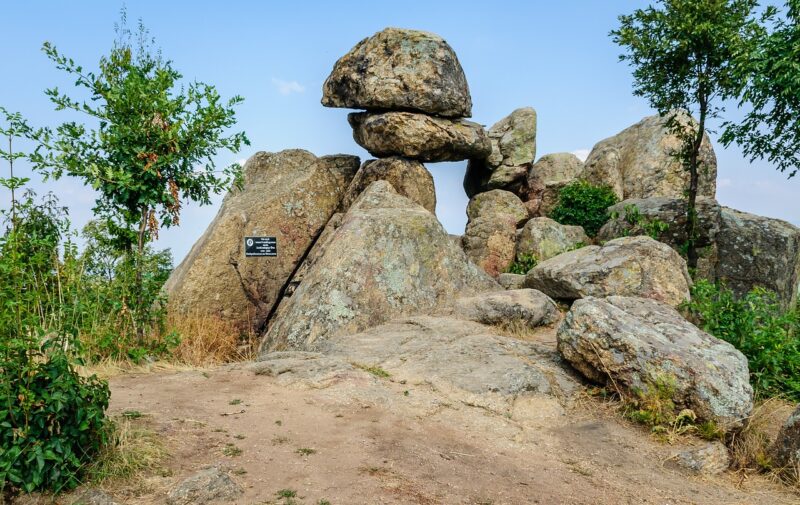
Megaliths, large stone structures built by ancient civilizations, have fascinated historians, archaeologists, and the general public for centuries. From the iconic Stonehenge in England to the lesser-known but equally intriguing sites across the globe, these structures stand as silent witnesses to the ingenuity and determination of our ancestors. Despite extensive research, the true purpose and methods of their construction remain shrouded in mystery. In this article, we will explore various megalithic sites, the theories surrounding their construction, and what they tell us about ancient societies.
1. What are Megaliths?
Megaliths are large stones that have been used to construct a wide variety of structures and monuments. The term “megalith” comes from the Greek words “mega” meaning large and “lithos” meaning stone. These impressive structures are typically associated with ceremonial functions, tombs, or astronomical observatories. Megaliths can be found on every continent except Antarctica, showing that ancient peoples shared a common drive to create monumental architecture.
Common types of megalithic structures include:
- Standing Stones: Tall, upright stones often arranged in circles or rows, like the famous Stonehenge.
- Dolmens: Chamber tombs consisting of a large flat stone supported by upright stones, typically used for burial purposes.
- Menhirs: Single upright stones set in the ground, often associated with religious or ritualistic significance.
- Cromlechs: Circular enclosures made from large stones, often found in burial contexts.
The sheer scale and weight of these structures raise the question: how did ancient civilizations manage to transport and erect these massive stones without modern technology?
2. Famous Megalithic Sites Around the World
There are countless locations where these remarkable structures can be found. Here are a few of the most significant sites that continue to baffle experts:
Stonehenge (England)
Perhaps the most famous megalithic structure, Stonehenge consists of a ring of standing stones set within earthworks. The exact purpose of Stonehenge remains unclear, though theories range from it being an astronomical observatory to a religious site.
Göbekli Tepe (Turkey)
Dating back to around 9600 BCE, Göbekli Tepe is considered one of the oldest known temples in the world. Composed of massive carved stones arranged in circular formations, this site challenges preconceived notions about the evolution of human society and worship practices.
Carnac Stones (France)
The Carnac Stones are a collection of over 3,000 standing stones located in Brittany, France. Arranged in rows and circles, these stones are believed to date back to the Neolithic period and their purpose remains unknown.
Megaliths of Malta
The temples of Malta, including Ħaġar Qim and Mnajdra, are some of the oldest free-standing stone structures in the world, dating back over 5,000 years. The intricate carvings and alignment with celestial events suggest they held significant religious importance.
Each of these sites offers insights into the cultures and beliefs of the ancient societies that built them, but they also raise further questions about their construction and usage.
3. How Were Megaliths Built?
The construction of megaliths requires immense planning, organization, and teamwork, not to mention considerable physical effort. Here are some theories regarding how ancient peoples might have accomplished this incredible feat:
Transporting the Stones
One of the main challenges was moving the massive stones. Various hypotheses explain the methods used:
- Using sledges made from wood and lubricating the ground with water or animal fat to reduce friction.
- Rolling the stones on logs, allowing easier movement over short distances.
- Harnessing manpower by utilizing a large workforce, perhaps through communal efforts or organized labor.
Erecting the Structures
Once transported, the stones needed to be erected, a task that likely involved considerable engineering skill:
- Digging pits to secure the base of the stones and using a lever system to hoist them upright.
- Constructing an earth ramp to push or pull the stones into an upright position.
- Employing counterweights to assist in raising the stones without the tools we have today.
While the specific methods are still debated, the successful construction of megaliths illustrates the advanced knowledge and skills of these ancient civilizations.
4. The Purpose of Megaliths
Understanding the purpose of megaliths is equally perplexing. Here are some commonly accepted theories:
Ritual and Ceremonial Uses:
Many researchers believe that megaliths served as sites for rituals, ceremonies, and gatherings. They may have been used for agricultural festivals, funerary rituals, or to commemorate celestial events.
Astronomical Observatories:
Several megalithic sites align with specific celestial events like solstices and equinoxes, indicating that they may have been used as astronomical observatories to track seasons and agricultural cycles.
Markers of Territory or Status:
Some believe megaliths served as territorial markers, signaling ownership of land or significant societal status. They could also represent a marker for the dead, indicating sacred burial grounds.
Several megalithic sites align with specific celestial events like solstices and equinoxes, indicating that they may have been used as astronomical observatories to track seasons and agricultural cycles.
Markers of Territory or Status:
Some believe megaliths served as territorial markers, signaling ownership of land or significant societal status. They could also represent a marker for the dead, indicating sacred burial grounds.
Regardless of their purpose, one thing is clear: megaliths represent a monumental achievement in human history, showcasing the abilities of ancient societies.
5. Conclusion: The Enduring Mystery of Megaliths
Megaliths continue to captivate our imagination and inspire a sense of wonder. Despite advancements in technology and research, the exact methods of construction and the full spectrum of their purposes may never be fully understood. Each megalithic site provides a unique lens into the lives and beliefs of ancient civilizations, shaping a narrative of human ingenuity and resilience. The beauty and mystery of these structures invite us to ponder not just the past but what it means to create something that transcends time.
As you explore these incredible monuments, let them serve as a reminder of our shared human heritage, inspiring us to seek knowledge and understanding of those who came before us.







